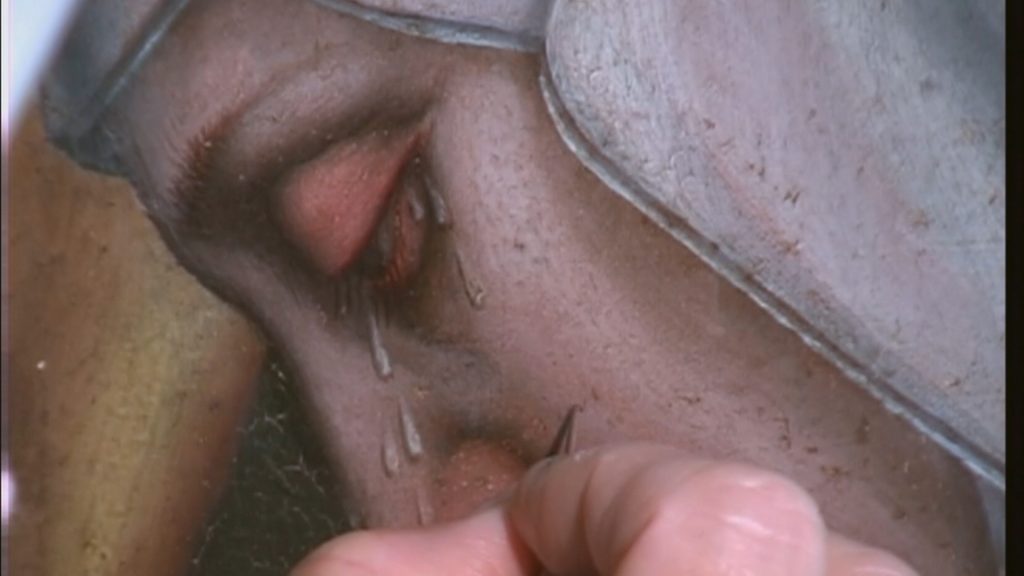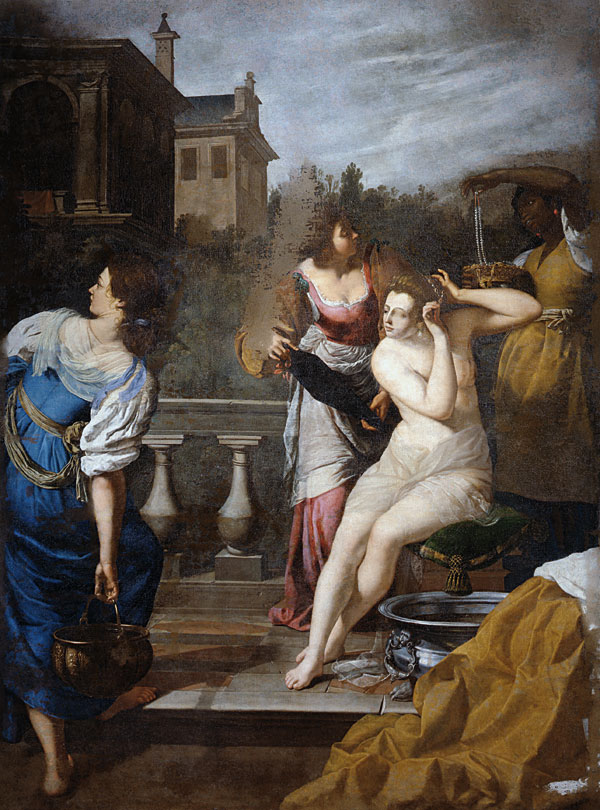Laura Knight in 5 Paintings: Capturing the Quotidian
An official war artist and the first woman to be made a dame of the British Empire, Laura Knight reached the top of her profession with her...
Natalia Iacobelli 2 January 2025
20 March 2023 min Read
When Jane Fortune arrived in Florence in the 1960s to study art she was left with one burning question: where are the women artists? As she often recalled, not one female artist was ever mentioned in her art history classes. Years later, Fortune felt a calling to return to the Tuscan city, so she came back— this time determined to roll up her sleeves and get to business.
Born on August 7, 1942 in Indianapolis, Indiana, Jane Fortune was an author, journalist, and philanthropist best known for her advocacy for women artists throughout history. Fortune’s quest to rediscover forgotten female artists began around 2003 when she came across a book on the self-taught Italian artist Plautilla Nelli at a used book fair.

Jane Fortune at her desk. Advancing Women Artists Foundation.
Considered Florence’s first female painter, Plautilla Nelli was a Dominican nun who led an all-female art workshop out of her convent. For a woman to become a professional artist during the Renaissance was no easy feat: women couldn’t attend formal classes, they couldn’t study anatomy, and they couldn’t be paid for their work. Those who became nuns, however, had a unique opportunity. Convents in the Renaissance were vibrant creative centers where nuns were encouraged to practice writing, music, and painting.
Much to Fortune’s surprise, Plautilla Nelli was fairly unknown even among Florentines. When Fortune finally localized Lamentation with Saints, one of Nelli’s paintings she had read about, she was appalled to see it hanging lusterless and full of dirt. Furthermore, when removed from the wall the painting was crawling with woodworms.

Plautilla Nelli, Lamentation with Saints, 16th century, San Marco Museum, Florence, Italy. Detail.
In 2009, Fortune founded the American non-profit organization, Advancing Women Artists Foundation, which would succeed in providing the answer to her guiding question.
If nobody knew who Nelli was, then how many other women artists were out there?
Plautilla Nelli’s Lamentation with Saints was the first of thousands of pieces Jane Fortune would discover, using a map of Florence as her very own treasure hunt. Countless paintings made by the hands of women had been silently hiding away, some for centuries, in damp churches, crowded attics, and decaying storage spaces in and around Florence. The pieces Fortune and her foundation rescued, once magnificent and grandiose, were found lifeless as the surroundings they had been rotting in.

Plautilla Nelli, Lamentation with Saints, 16th Century, San Marco Museum, Florence, Italy. Detail. The Florentine.
The common thread? They were all artworks by women artists who had come to Florence to perfect their skills throughout history. Among them were Irene Parenti Duclos, Violante Ferroni, Élisabeth Chaplin, Amelia Peláez, and even Artemisia Gentileschi.
Artemisia Gentileschi’s David and Bathsheba (c.1650) was discovered by Fortune in 2008 in the attic of Florence’s Pitti Palace. It had been kept in storage for 373 years! When it was found, rain was dripping onto it from a hole in the roof, causing notable damage.

Artemisia Gentileschi, David and Bathsheba, c. 1650. Pitti Palace, Florence, Italy. Advancing Women Artists Foundation.
Jane Fortune and her foundation also raised funds for the restoration of these pieces. However, they included the condition that after being cleaned and repaired the pieces be put on permanent display. After passing through the hands of an all-female team of museum directors, art historians, and conservators, the works were transferred to museums where they were placed in the spotlight for all to see.

Plautilla Nelli, Lamentation with Saints, 16th century, San Marco Museum, Florence, Italy. Advancing Women Artists Foundation.
With Fortune at the helm, the Advancing Women Artists Foundation identified over 2,500 works in storage throughout Tuscany by women artists spanning five centuries, and it restored more than 70 of them. When asked what inspired her to specifically champion female artists of the Renaissance, Fortune explained:
There’s a whole gap in history that’s missing. If you read all the books then you’ll believe it was only men who did it.

Conservators working on Violante Ferroni’s Saint John of God Heals Plague Victims (1756). Francesco Cacchiani.
The Italian press gave Fortune the affectionate nickname “Indiana Jane.” Like a detective, she successfully uncovered thousands of real-life treasures that had been gathering dust for centuries. In 2009, Fortune won an Emmy for a documentary based on her book, Invisible Women: Forgotten Artists of Florence. In 2015, she was presented with Florence’s highest award, the Fiorino d’Oro, making her an honorary citizen of the Tuscan city she so loved. Jane Fortune died on September 23, 2018, leaving behind not only her monumental legacy but also countless works by women who, thanks to her, finally claimed their rightful place in history.

Jane Fortune holding her Emmy Award in 2009. The Florentine.
Jane Fortune. Invisible Women, Forgotten Artists of Florence. Florence, Italy: The Florentine Press, 2009.
Jane Fortune and Linda Falcone. Art by Women in Florence: A Guide Through Five Hundred Years, 2012.
Invisible Women, directed by Todd Gould and Clayton Taylor, WFYI Productions, 2012.
DailyArt Magazine needs your support. Every contribution, however big or small, is very valuable for our future. Thanks to it, we will be able to sustain and grow the Magazine. Thank you for your help!